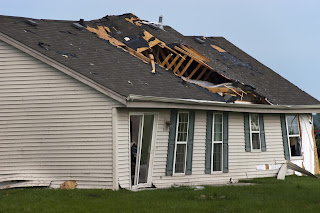Home Insurance: What is Covered and What is Not (Part -1)
Many people who have insured their
homes tend to become complacent and think that they are covered, no
matter what happens to the house. That is the biggest misconception.
There are thousands of different types of home insurance and policy
options. You should not take the nature and extent of your coverage for
granted. Study your policy carefully and do not hesitate to ask your
insurance agent for clarifications if you are not sure of anything. You
can then modify the policy or take additional coverage to give you the
protection you need.
Here are some of the coverages found on most policies and what you should know about them.
The Dwelling
The
word Dwelling refers to the house itself and any structures, like a
garage, that may be attached to it. The Amount of Insurance (Or Dwelling
Limit) as stated on the policy document will show the maximum amount
that the insurance company will pay if your home is destroyed by causes
or actions covered by the policy. Check to see id f the amount is enough
to get you a new home. If not, you need to increase your coverage.
Other Structures
Other
structures, as referred to in the policy, will mean a structure not
attached to the house. This covers, sheds / barns, pool houses,
standalone garages etc. The cover limit for these is separate from that
of the Dwelling and is usually much lower – often around 20% of the
Dwelling coverage. Check to see if the coverage you have is adequate.
You can buy additional coverage if required.
Personal Property
The
term personal property on the insurance policy refers to all your
belongings in the house – furniture, clothes, appliances, electronic
items and so on. Here too there will be a specific coverage limit which
is typically about 75% of the Dwelling limit. You can increase the
coverage by paying more. There is an important issue to note here. There
are two types of protection – “actual cash vale” and “replacement
cost.” If the protection is for actual cash value, depreciation will be
calculated and what you get for a 5 year old refrigerator that has been
destroyed will be less than the cost of buying a new one. If you are covered for replacement cost, the coverage will be for the cost of buying a new refrigerator at current prices.
Loss of Use
Where
will you stay, till your home is repaired or till you find a new one?
You are going to have to pay rent while continuing to pay your mortgage.
The Loss of Use coverage will pay your rental expenses. There are two
types of protection available.There is a payment limit that is the
amount that the insurance company will pay, irrespective of how long you
need to pay rent. Otherwise, if it is time based, all expenses will be
paid, regardless of the amount. But the coverage is only for a specified
time after which it will stop and you will not be paid anything.
In the next blog we will look at what is typically not covered by a home insurance policy.



Comments
Post a Comment